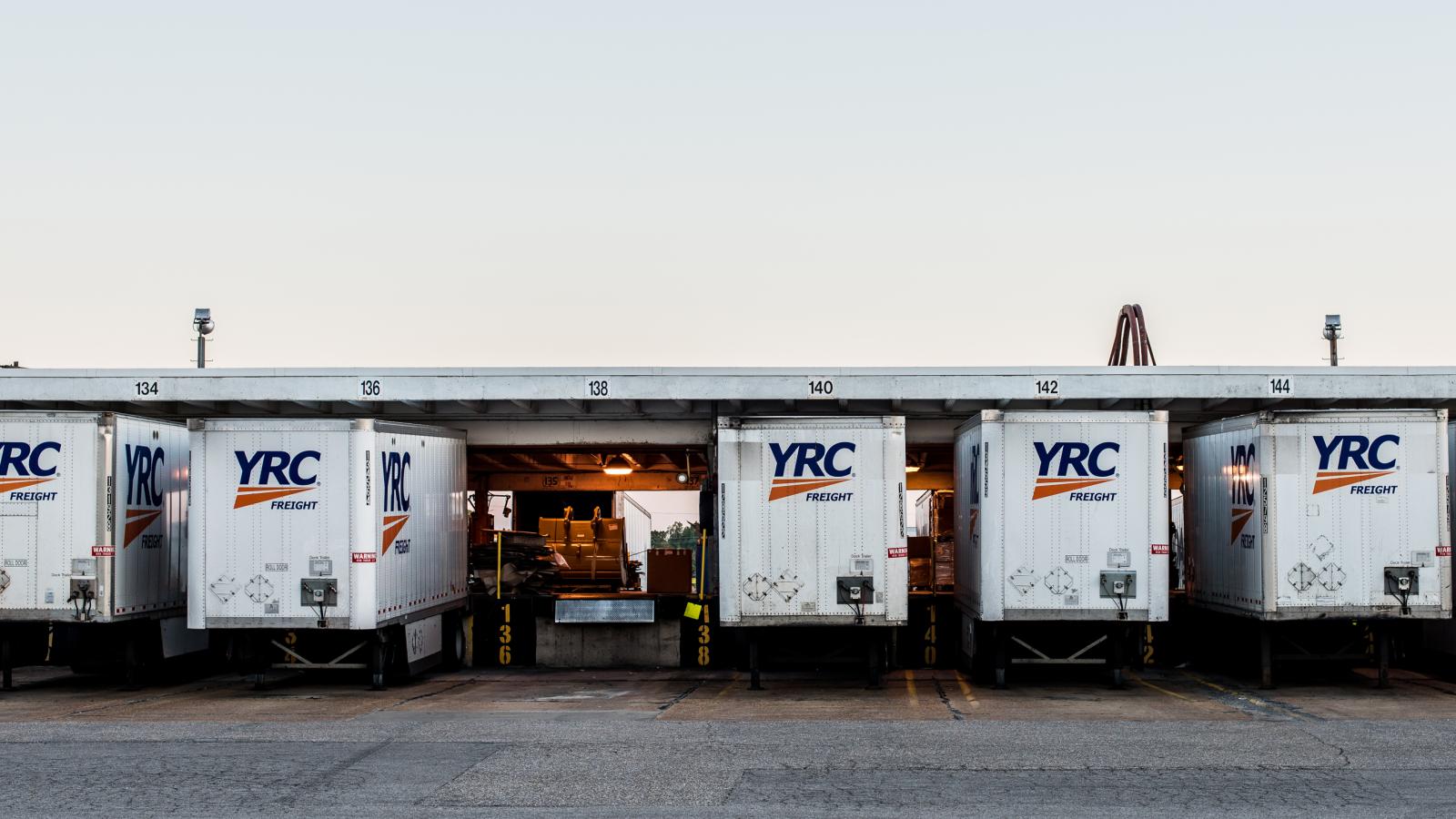
The loss of Yellow precipitated the steepest one-month drop in trucking employment since April 2020 and before that the LTL strike of 1994. Photo credit: Yellow.
The late July collapse of less-than-truckload (LTL) provider Yellow continues to send ripples through US trucking and shipping networks, with rival carriers gaining freight and trucking employment falling.
LTL provider Saia on Wednesday released updated shipment and tonnage data for July and August that showed an even greater increase in volume at the carrier than previously reported. Saia’s LTL shipment count jumped 14.2% year over year in August after rising 6% in July, the company said.
In mid-August, Saia said its volume to that point in the month had risen 13% on an annualized basis. The revised data for the full month shows volume gains continued throughout August. The Georgia-based company did not provide additional comment on its performance or the marketplace in general.
Saia’s sudden leap in volume can be tied directly to the shift of freight among LTL carriers after Yellow closed its doors July 30. Yellow had been the fifth-largest LTL provider by shipment volume, handling about 49,000 bills a day in 2022, according to data from research firm SJ Consulting Group.
The volume data underscores the presence Yellow had in the LTL market. Other LTL carriers, from national companies such as ABF Freight System to regional providers such as A. Duie Pyle in the Northeast, have reported significant freight gains post-Yellow in a period of otherwise slack freight demand.
Connecticut-based LTL provider XPO on Tuesday said its LTL shipments in August were up 8.1% year over year. That compares with a 1.9% increase in shipment count in the second quarter.
The loss of Yellow is proving an inflection point for the LTL market, pushing up rates and tightening capacity even though total volume isn’t believed to be rising. Instead, a smaller number of LTL carriers is dividing the freight once hauled by Yellow subsidiaries YRC Freight, Reddaway, New Penn and Holland.
Trucking's payroll plunges
The US trucking industry also is working with fewer employees. The number of employees on payroll at for-hire trucking companies dropped by 35,700 in August from July, according to data released by the US Bureau of Labor Statistics (BLS) Friday. Not coincidentally, Yellow had about 33,000 employees.
The decrease pulled trucking employment down 2.1% from a year ago and 2.2% from July, according to the preliminary BLS data. The Journal of Commerce For-Hire Trucking Employment Index, which measures the increase in trucking employment since 2018, fell from 106.3 in July to 103.9 last month.
The index shows trucking employment is still about 4% higher than in the fourth quarter of 2018. Last month’s plunge from 1.62 million to 1.58 million employees halved the workforce gains trucking made since the pre-pandemic peak of mid-2019, when the BLS reported 1.55 million trucking employees.
The August drop in trucking employment — which was even worse when adjusted for seasonality — was the third-largest such plunge on record. A 1994 strike against multiple LTL companies by the International Brotherhood of Teamsters sidelined 49,700 employees that April while the COVID-19 recession put 84,500 trucking employees out of work in April 2020. In both cases, hiring bounced back.
“The difference here is that both those events caused temporary reductions,” Jason Miller, associate professor of logistics at Michigan State University, told the Journal of Commerce Wednesday. This means the employees lost at Yellow may not be hired by other trucking companies that quickly.
LTL employment could be at nine-year low
The remaining LTL carriers have more freight to handle, but keeping capacity tight by adding as few employees as necessary helps support higher pricing. The bidding war over Yellow’s terminals also reflects a desire to control existing capacity in the market, limiting the availability of capacity to competitors, analysts say.
Miller, a Journal of Commerce contributor, estimates that LTL sector employment post-Yellow is now at levels last seen in August 2014 — about 236,600 employees, down from 269,600 in July, the last month for which BLS data is available.
“From a capacity standpoint, total weekly hours for employees in LTL are sitting around 2014 levels, which again points to why Yellow's freight was reallocated across carriers relatively painlessly,” Miller said.
Excluding the 33,000 Yellow jobs, unadjusted — or real — trucking employment dropped by 2,700 jobs in August, reflecting a depressed freight market. That decrease is more in line with the 1,100 jobs lost in August 2015 and 1,600 jobs lost in the same month in 2019, both poor years for trucking.
Trucking usually gains jobs in August as freight demand picks up ahead of the fall holidays. For-hire carriers added 6,300 employees in August 2021 and 3,700 workers in August 2022. Trucking payrolls expanded by 9,800 jobs in August 2020 as the economy recovered from the COVID-19 recession.

